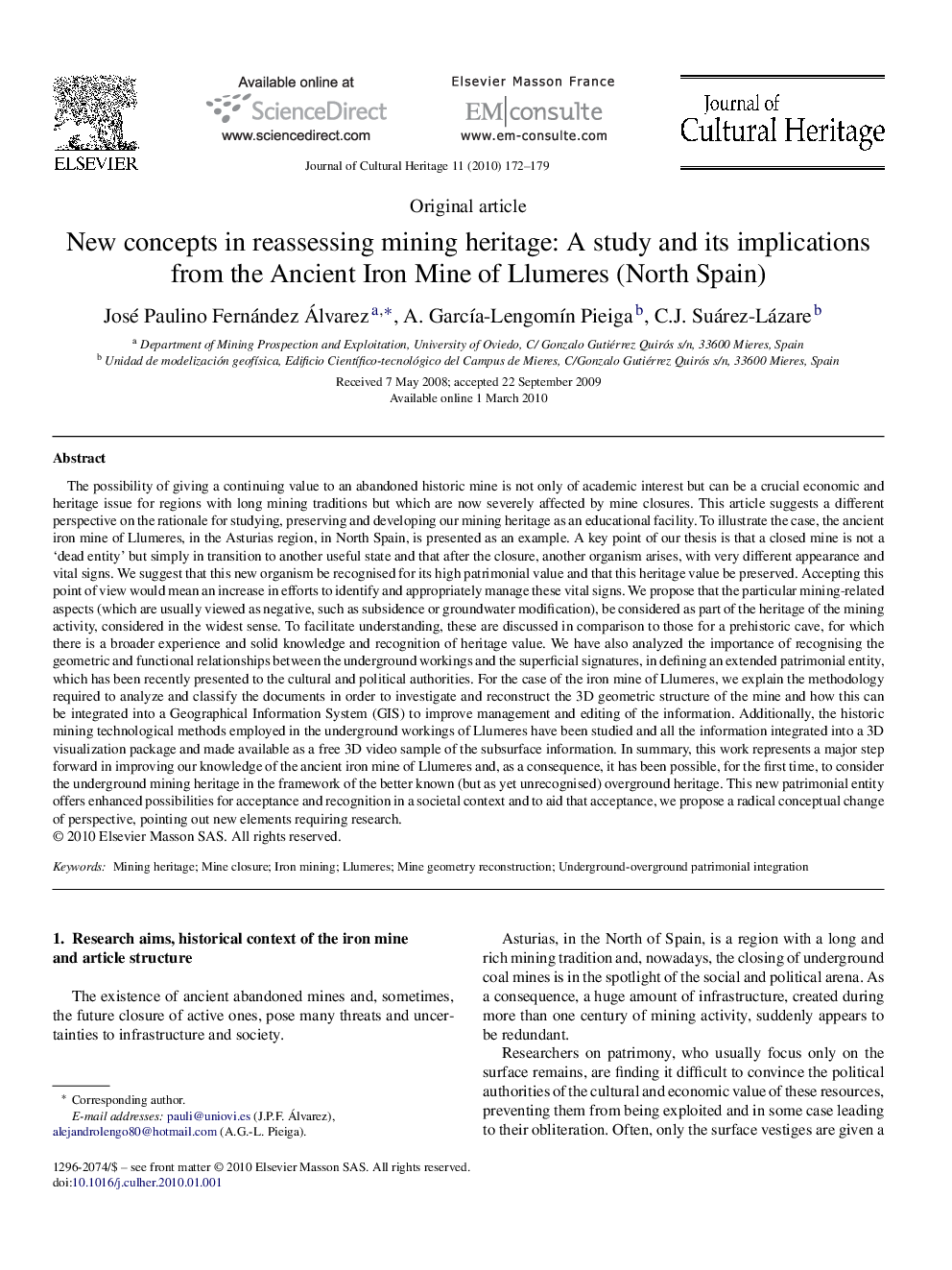| Article ID | Journal | Published Year | Pages | File Type |
|---|---|---|---|---|
| 1038135 | Journal of Cultural Heritage | 2010 | 8 Pages |
The possibility of giving a continuing value to an abandoned historic mine is not only of academic interest but can be a crucial economic and heritage issue for regions with long mining traditions but which are now severely affected by mine closures. This article suggests a different perspective on the rationale for studying, preserving and developing our mining heritage as an educational facility. To illustrate the case, the ancient iron mine of Llumeres, in the Asturias region, in North Spain, is presented as an example. A key point of our thesis is that a closed mine is not a ‘dead entity’ but simply in transition to another useful state and that after the closure, another organism arises, with very different appearance and vital signs. We suggest that this new organism be recognised for its high patrimonial value and that this heritage value be preserved. Accepting this point of view would mean an increase in efforts to identify and appropriately manage these vital signs. We propose that the particular mining-related aspects (which are usually viewed as negative, such as subsidence or groundwater modification), be considered as part of the heritage of the mining activity, considered in the widest sense. To facilitate understanding, these are discussed in comparison to those for a prehistoric cave, for which there is a broader experience and solid knowledge and recognition of heritage value. We have also analyzed the importance of recognising the geometric and functional relationships between the underground workings and the superficial signatures, in defining an extended patrimonial entity, which has been recently presented to the cultural and political authorities. For the case of the iron mine of Llumeres, we explain the methodology required to analyze and classify the documents in order to investigate and reconstruct the 3D geometric structure of the mine and how this can be integrated into a Geographical Information System (GIS) to improve management and editing of the information. Additionally, the historic mining technological methods employed in the underground workings of Llumeres have been studied and all the information integrated into a 3D visualization package and made available as a free 3D video sample of the subsurface information. In summary, this work represents a major step forward in improving our knowledge of the ancient iron mine of Llumeres and, as a consequence, it has been possible, for the first time, to consider the underground mining heritage in the framework of the better known (but as yet unrecognised) overground heritage. This new patrimonial entity offers enhanced possibilities for acceptance and recognition in a societal context and to aid that acceptance, we propose a radical conceptual change of perspective, pointing out new elements requiring research.
